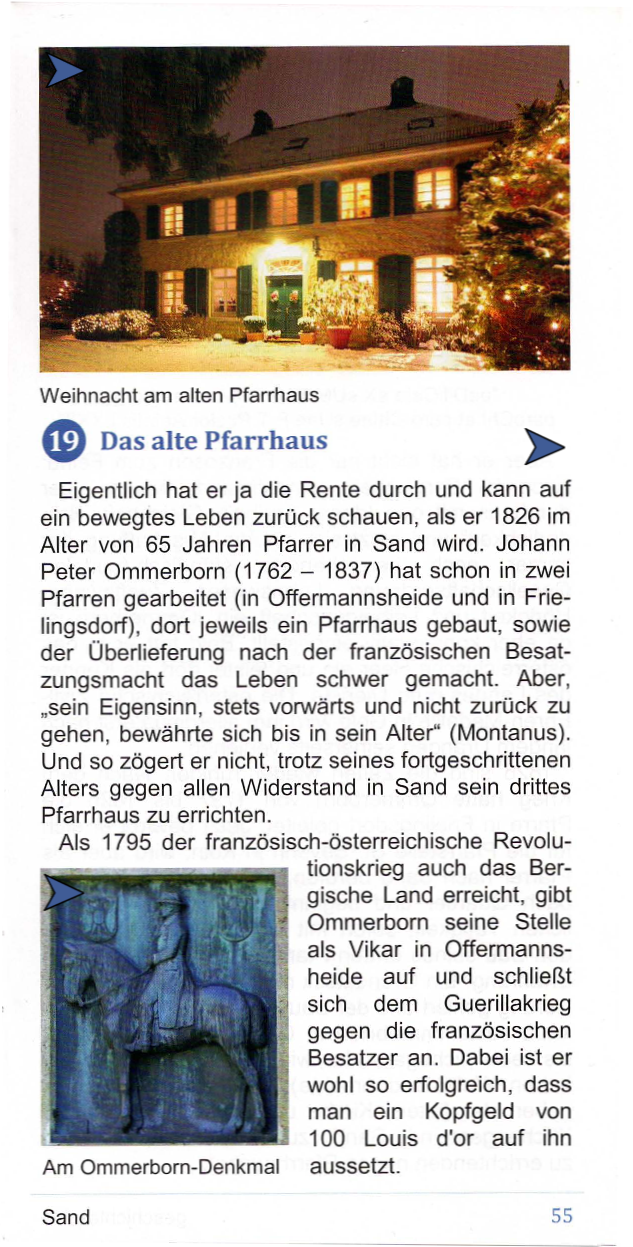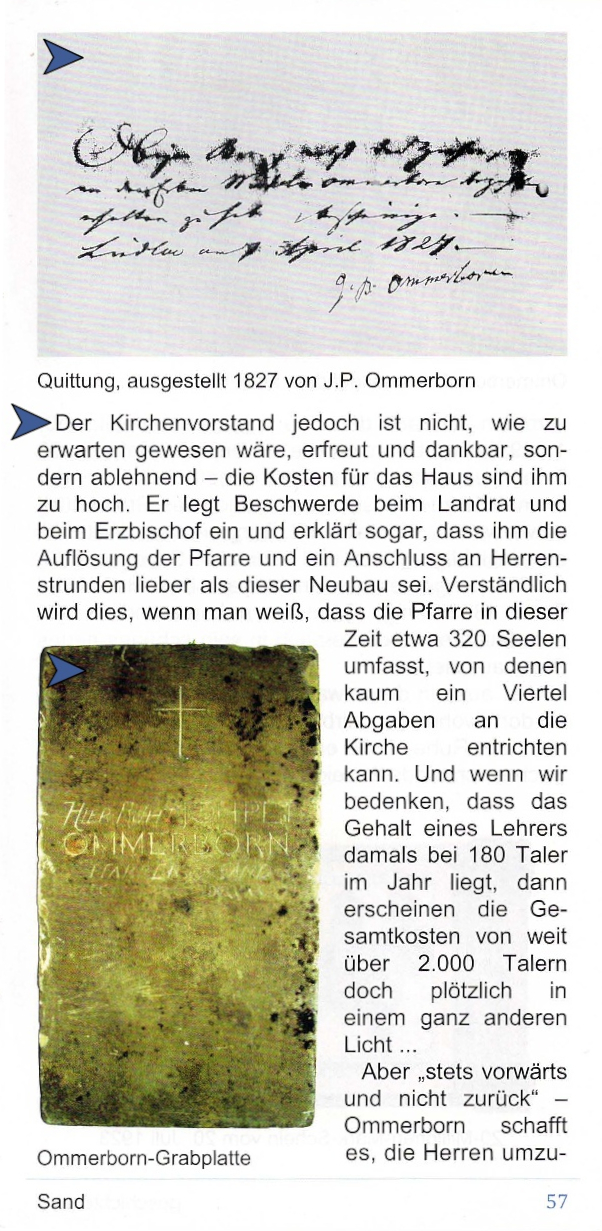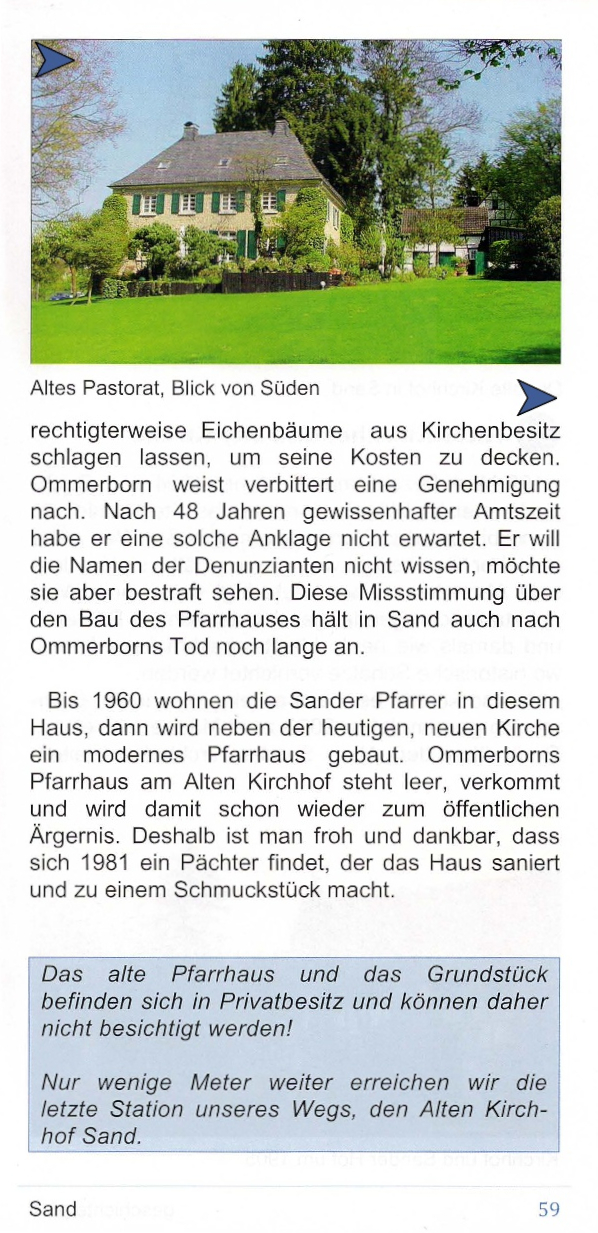geschichte.pfad
Historischer Wanderweg Sand
von Manfred Dasbach und Udo Harler
Kapitel 19
Das alte Pfarrhaus
Seiten 55 - 59
Download der kompletten Broschüre
"geschichte.pfad Historischer Wanderweg Sand"
mit englischen Texten

|
When Peter Ommerborn (1762 – 1837) reached the age of retirement he could look back on an eventful life. In 1826 at the age of 65 he became catholic priest in Sand. He had already worked in two parishes (at Offermannsheide and at Frielingsdorf) where in each place he had built a presbytery. According to tradition he made life difficult for the French occupiers. But “his obstinacy to always look forward and never to go back” proved successful till his old age. (Montanus) He didn’t, therefore, hesitate to have his third vicarage erected at Sand despite his advanced age and in spite of the opposition he met from parishioners. When in 1795 the French-Austrian Revolution War reached the county of Berg, Ommerborn resigned from his office as priest in order to join the guerrilla war against the French occupiers. He was so successful that a bounty of 100 Louis d’Or was placed on his head. |

|
In 1826 times were more settled again. After the war Ommerborn had been in charge of the parish at Frielingsdorf. He then applied for the ecclesiastical post of Sankt Severin in Cologne but was given the parish of Sand instead. He took quarters in Lerbach Manor. In addition to his original task he at once began the construction of the third vicarage. He now knew the ropes: he had to find a plot, clarify and secure the financing and plan the construction. He sold his two properties at Offermannsheide (up until now it hasn’t been clear how he had become such a well-to-do man), bought a piece of land next to the (old) church and donated it to the congregation “for the purpose of a new vicarage to be erected thereupon”. |

|
|

|
Regrettably the three years during which he inhabited the vicarage don’t give him much peace. (He died in 1837) In 1835 two members of the parish council filed a complaint against him. |

|
|
nach oben
| vorheriges Kapitel | Übersichtskarte | nächstes Kapitel |
Mit freundlicher Unterstützung durch
